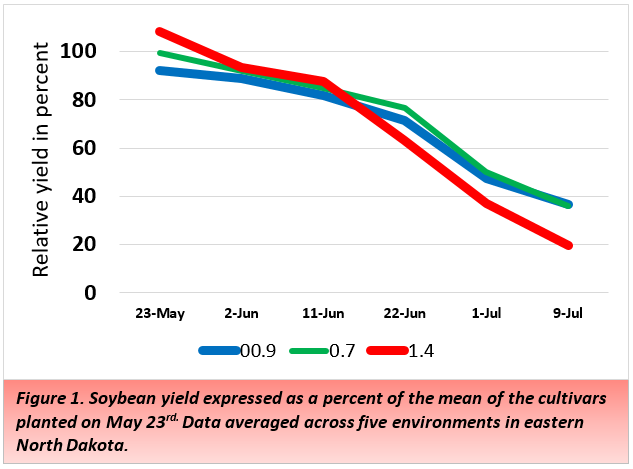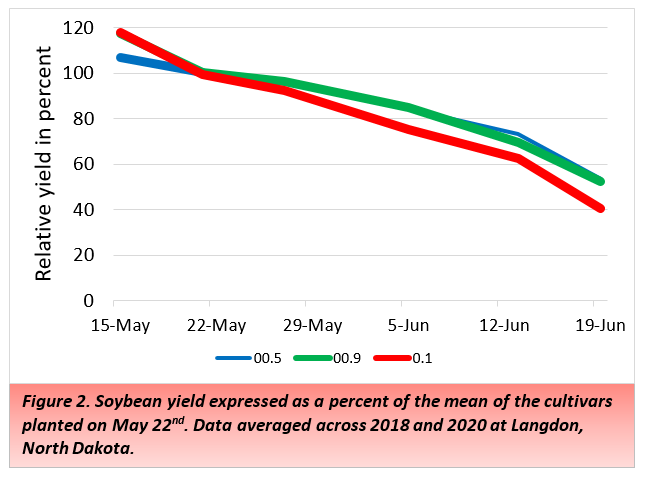Late Planting Soybean
This page was adapted from the article, "Late Planting Soybean" which appeared in Crop & Pest Report on June 2, 2022.
Soybean varieties In North Dakota are group 00 (double zero), 0 (zero), or 1. These groups are divided by decimal places to indicate the maturity ratings within a group. For example, a 0.5 maturity rating is a mid-group 0 variety, whereas a 0.9 is a late group 0 variety, and will take more days to reach physiological maturity. Early seeding dates are recommended for growers across all regions in North Dakota. However, due to wet and cool conditions not all soybean fields have been seeded at this time.
An NDSU study evaluated the influence of variety maturity rating on soybean yield when planted from May to late into July. Experiments were conducted at Prosper and Lisbon for two seasons, and Carrington during one season. Three varieties were used with maturity ratings of 00.9, 0.7 and 1.4.
Typically, when a crop has fewer total growing days in the field, the yields decline. Figure 1 provides the relative yield of three varieties with different maturity ratings and six planting dates, expressed in percent. The average yield for the three cultivars for May 23rd was set at 100 percent and all other yields are expressed as a percent. Yields declined with later planting of soybean. The latest maturing cultivar had the highest yield when planted early. After the June 11 planting the late maturing cultivar yielded lower than earlier maturing cultivars.

Another NDSU study at Langdon, during 2018 and 2020, evaluated the influence of maturity rating on soybean yield when planted from May to mid-June. Three varieties were used with maturity ratings of 00.5, 00.9 and 0.1.
Figure 2 provides the relative yield of the three varieties and six planting dates averaged across two years, expressed in percent. The average yield for the three varieties for the May 22nd planting date was set at 100 percent and all other yields are expressed as a percent. Yields declined with later planting of soybean. The latest maturing cultivar (0.1) had the highest yield when planted early. After the May 22nd planting date, the late maturing cultivar yielded lower than earlier maturing cultivars.
Soybean is an oil seed crop. When planting is delayed the oil content of the soybean seed declined for both the central and northern North Dakota locations.

Conclusion
The interaction of planting date by maturity rating of soybean varieties, indicated that yield decreased as planting was delayed further into the growing season and that earlier maturing varieties did better when planted later in the season compared to a later maturing variety.
